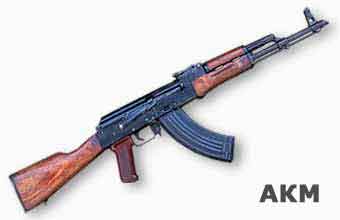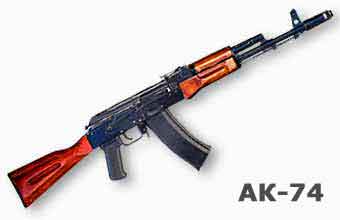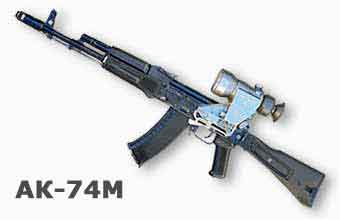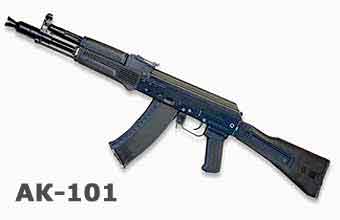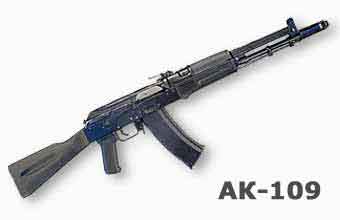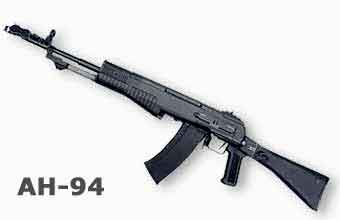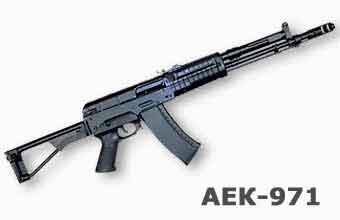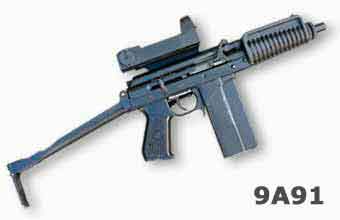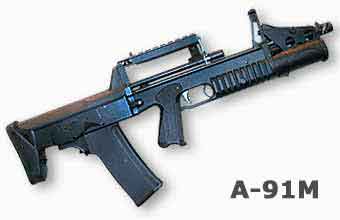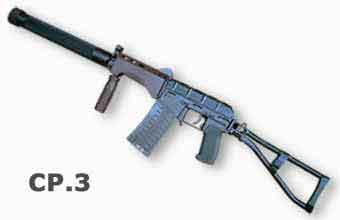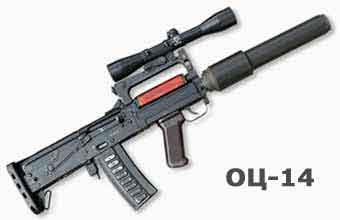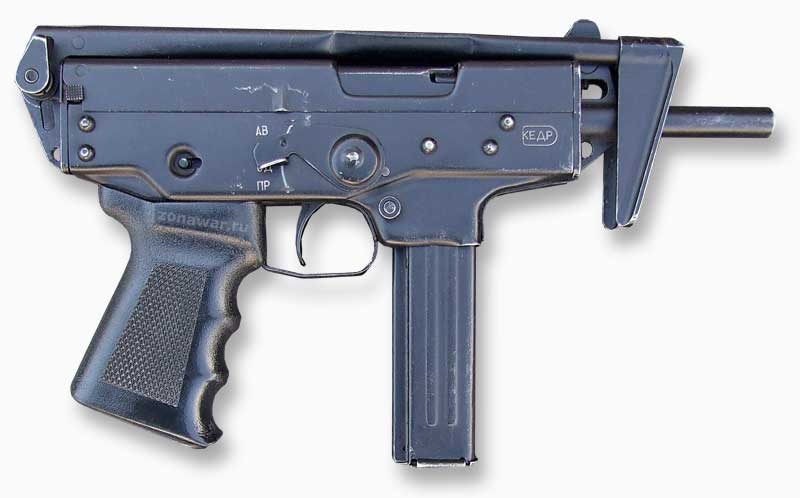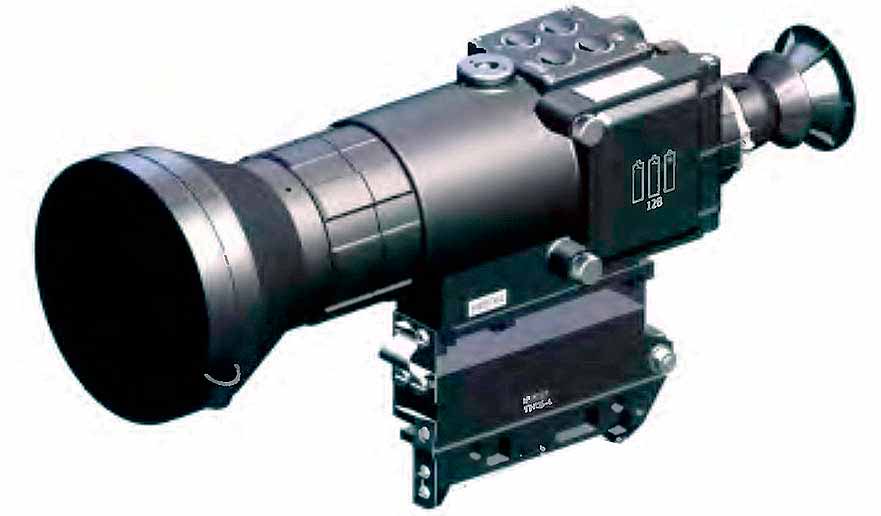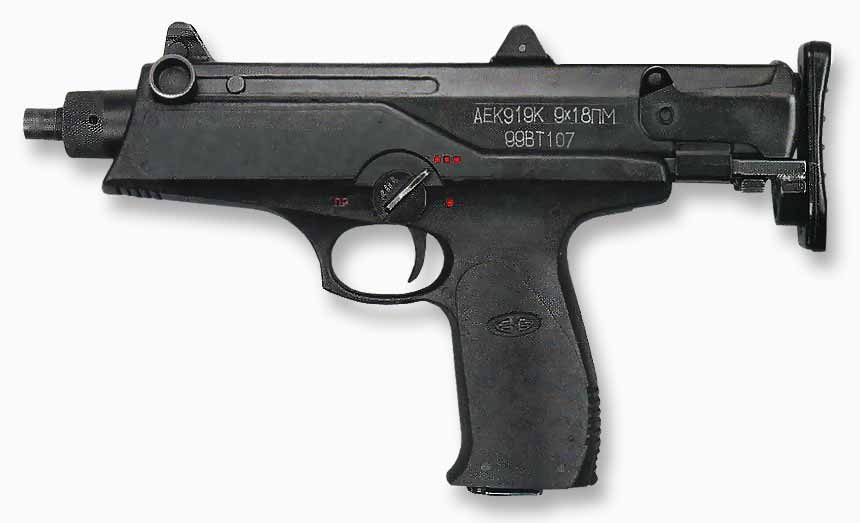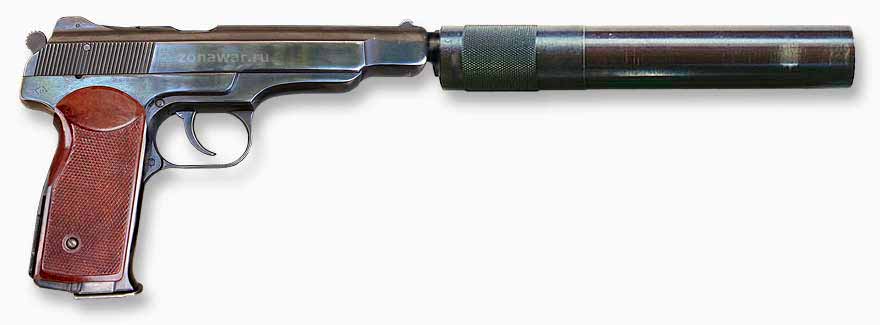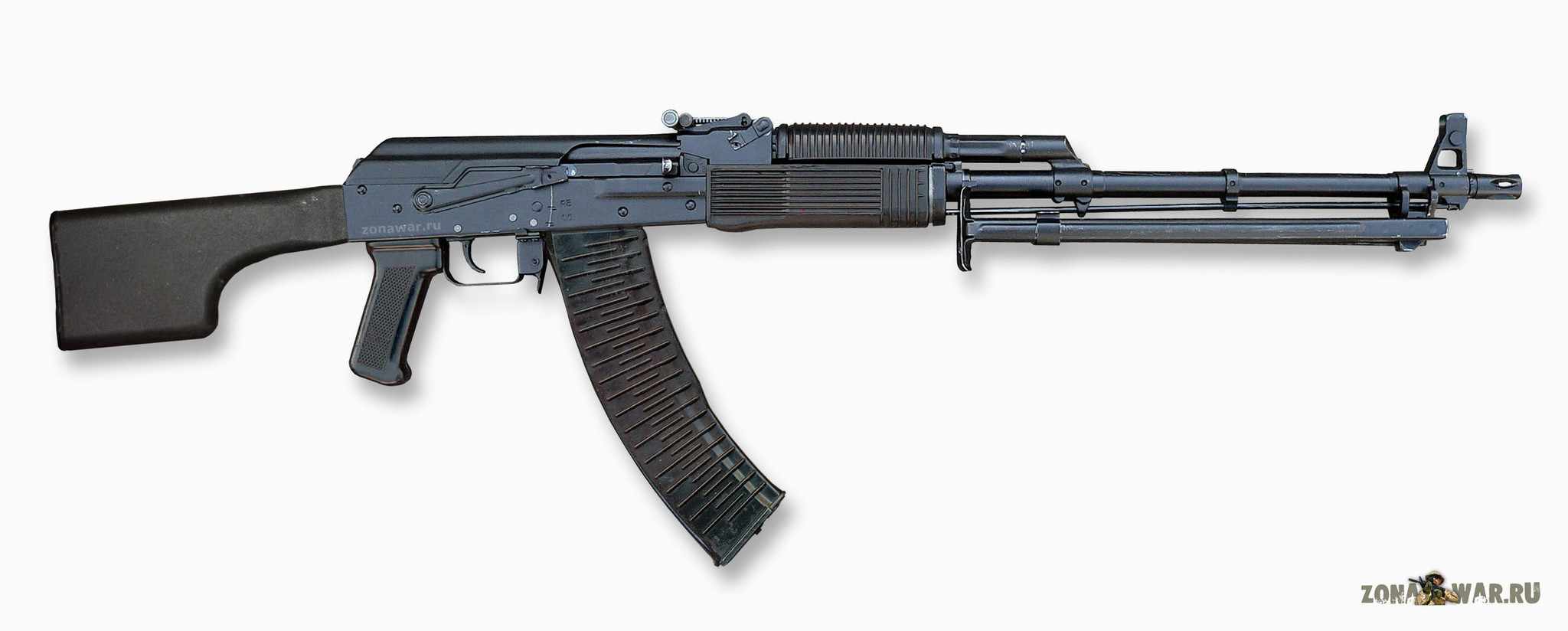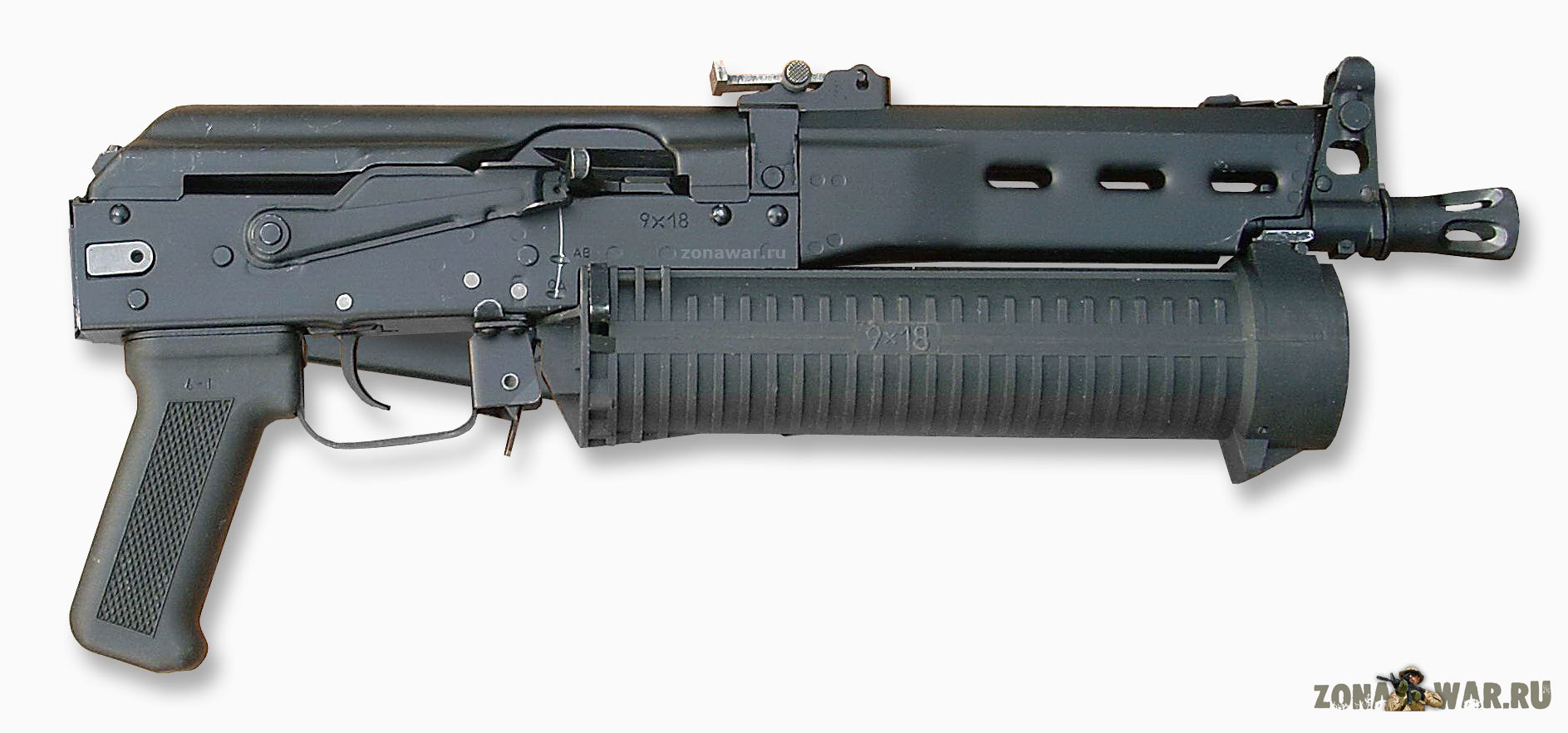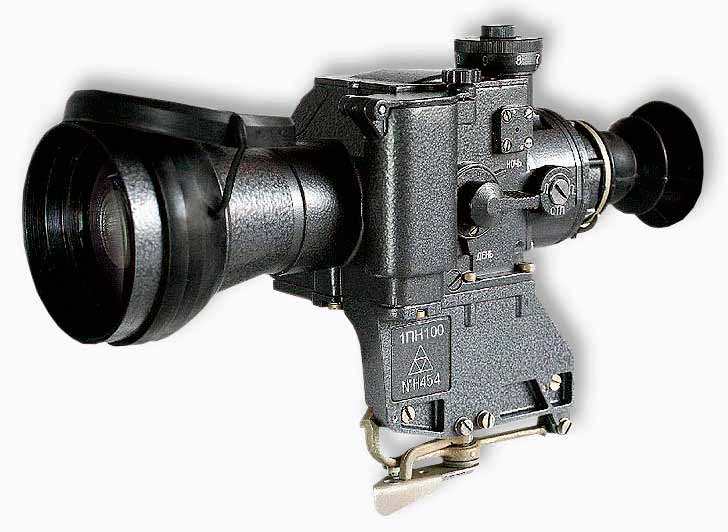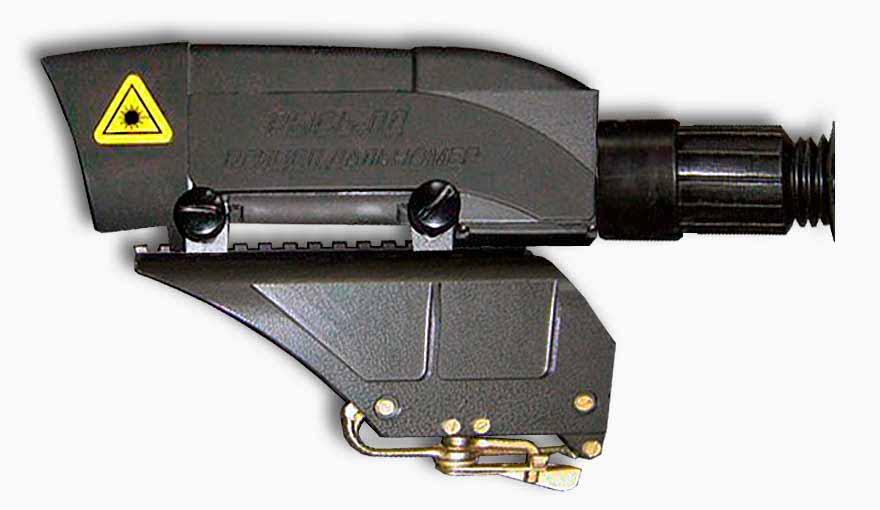During World War II the problem of increasing fire density in a close combat had to be solved through the use of pistol-machine guns. However, the war prompted the urgent need in the weapon that might be able to effectively hit by automatic fire the targets located at average ranges. Neither a low-power pistol cartridge nor too powerful rifle cartridge could be used for that purpose. So, the problem was resolved through the development of an intermediate power cartridge. On the basis of this cartridge was developed the automatic hand-portable weapon with det- tachable magazine and alternative mode of fire, which with the course of time became the main weapon.
This weapon was called in the Soviet Union a «submachine gun», while in the West (followed by the Germans who first adopted this weapon in 1943) it was called «assault rifle».
he first versions featured Cal. 7.5-7.62mm. Initially the difference between the submachine gun and the assault rifle was not only in their designation. While the Soviet submachine gun designed AK was chambered for the intermediate cartridge (later call «submsachine gun»), thereby permitting to develop this weapon rather compact or small in size and easy to operate in a close combat, then the NATO countries developed the cartridge for relatively long barrel assault rifles chambered for it. The most popular among them became the Belgium-made FN FAL and Germany-made G-3 assault rifles. Maybe, it was the reason why the Western countries kept in armies combat inventory the pistol-machine guns intended for close combat.
The submachine guns and assault rifles took place in the center of a peculiar «triangle» (that is between the rifle, pistol-machine gun and light machine gun). They have the weight of 3.5-4.5 kg, relatively short length of 800-1,100 mm, effective rate of fire up to 100-150 rounds per minute, reliable and easy to operate under various conditions.
In the 1960s the important changes took place, namely, decrease in caliber of the individual weapons. The M16 (M16A1) Cal. 5.56mm was fielded in the U.S. and a little bit later appeared small caliber rifles adopted for general use in other countries, including the Israeli «Galil» rifle, the Belgium-made FNC rifle, the Austria-made Stg 77, the France-made FA MAS. This was only natural, if only because V.G. Fedorov outlined the conformity to the natural laws of decreasing calibers during development of the new generations of infantry weapons featuring the qualitatively new requirements in terms of ballistics.
The submachine gun cartridge of 5.56mm with some decrease of the sighting range allowed to increase the effective fire at ranges of up to 300-400 m, since a more high-velocity bullet attained at these ranges a more flat trajectory and owing to the lightening of the cartridge and decrease of recoil led to ease of the weapon operation and portable ammunition load. In 1974 the new system of the small arms of Cal. 5.45mm was adopted for service in the Soviet Union, the AK-74 assault rifle became its base. The low-impulse small caliber cartridges put on a par both submachine guns and assault rifles in terms of its combat performance.
Since a soldier armed with the submachine gun has to deliver fire againist different targets, his ammunition load comprises the common steel core bullets, tracer bullets and other special bullets. The stopping effect of the bullet depends of amount of energy transmitted to the defeated target and the nature of this defeat. The combination of the stopping and penetrating effects of the bullet are of special importance today due to the wide use of individual armor protection means, including armored vests, helmets and armor plates. The bullets of modern submachine guns are capable of penetrating steel helmets at ranges of up to 800 m, armor vests of II and III levels of protection up to 400-500 m.
The individual weapons are fitted on large scale with optical and collimating sights intended for night firing. The removable bayonet knife is used for hand to hand fighting. A number of submachine guns are fitted with folded or sliding stocks intended for air borne troops, for personnel aboard vehicles on move and the like. Over the past 10 – 15 years one can see the tends to develop submachine guns and assault rifles enabling the fighter to make the first shot as soon as possible and shift the fire from one target to another with all probability to hit the pint point target with the first shot or the first short burst and be able to carry his weapon for a long time in convenience.
This is being achieved through the improvement of the weapon via enhancing its accuracy, a low dispersion shot pattern, balance and ergonomics and optimal arrangement of the safety lever, including sighting aids and decrease of the weapon’s size and weight without negative effect on its accuracy and lethality. A number of versions have two standard modes of fire that of automatic and single shots and are fitted additionally with a fixed mode of fire by two three shots to ensure the target hit without excessive expenditure of ammunition.
The «universality» of submachine guns and assault rifles made them the most mass-produced type of weapons used by all services of the armed forces. Evidently, this trend will be maintained in their regard for a long time. The modern complex of individual weapon is frequently represented by the submachine gun complex consisting of a «small arms» barrel and «artillery» in the form of an underbarrel grenade launcher outfitted with a splinter projectile and an optronic system in the form of the night or combined sight.
The decrease of the caliber and reduction of the bullet’s recoil resulted in other changes in the system of infantry weapons. Among other things, the possibility of substitution of pistol-machine guns for the weapon unified with a submachine gun or with an assault rifle, thus appear small caliber carbines and shortened assault rifles with strong resemblance to the Soviet AKS-74U. Such submachin guns are more convinient for combat actions in limited spaces and for soldiers of non combatant subunits.
AKM and AKMS modernised Kalashnikov assault rifles
AK-74 and AKS-74 Kalashnikov assault rifles
AKS-74U Kalashnikov shortened assault rifle
AK-74M Kalashnikov modernized assault rifle
AK-107, AK-108 and AK-109 with balanced automatic configuration
AN-94 Nikonov assault rifle
AEK-971, AEK-972 and AEK-973 assault rifles
9A91 shortened assault rifles
A91M firearm grenade launcher complex

